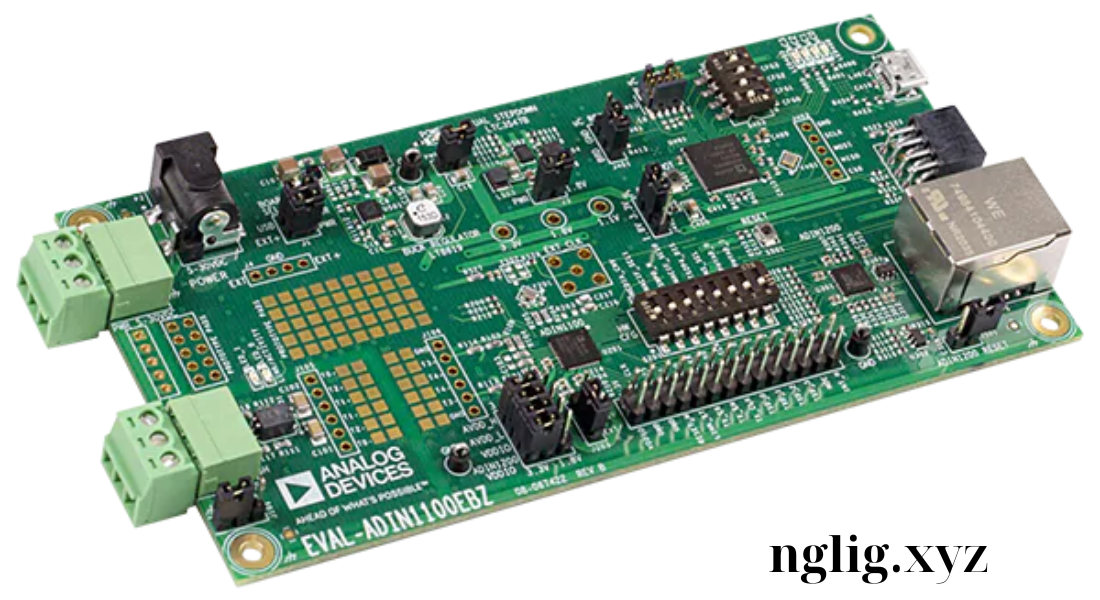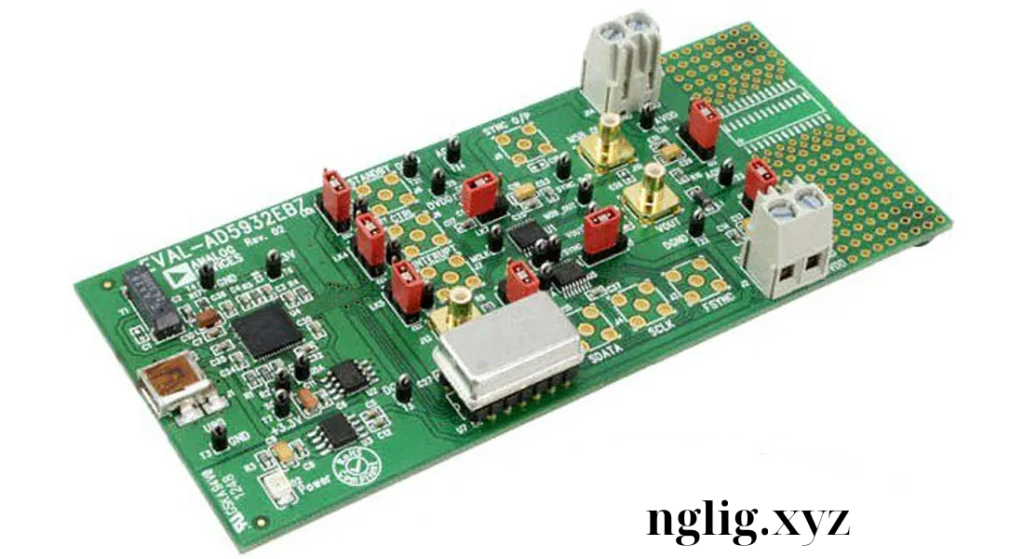Blog
Exploring Analog Devices Evaluation Boards: Key Insights and Applications
Advantages of Using Analog Devices Evaluation Boards in Project Development
Analog Devices evaluation boards go beyond mere functionality—they empower engineers and designers to innovate with confidence. By offering a standardized, high-quality testing environment, these boards make it possible to test products under different conditions and parameters, ensuring robustness and reliability. Here are additional advantages that make Analog Devices evaluation boards an invaluable asset for project development:
- Scalability for Prototyping: When engineers and developers work with Analog Devices evaluation boards, they can build scalable prototypes that facilitate the transition from concept to production. This scalability helps in verifying performance across different stages of development, thus minimizing potential issues later in the production phase.
- Seamless Integration with ADI Tools and Software: Analog Devices provides a suite of software and tools compatible with its evaluation boards, allowing engineers to collect data, perform simulations, and make data-driven decisions. Platforms like the ADI WaveTool or the ACE software enable users to evaluate IC performance accurately. These tools make the evaluation boards versatile, whether for testing signal processing or RF capabilities.
- Enhanced Documentation and Support: Analog Devices ensures that each evaluation board is well-documented. With comprehensive guides, tutorials, and even dedicated customer support, users can troubleshoot issues swiftly. This high level of support also includes access to forums and a community of ADI users, which can be particularly helpful for complex applications.
- Accelerated Time to Market: By providing a ready-to-use platform, Analog Devices evaluation boards help developers reduce their time to market. Engineers can validate concepts and prototype faster, often identifying potential issues early in the design phase, thereby expediting the entire development cycle.
- Versatility Across Multiple Applications: One of the key benefits of Analog Devices evaluation boards is their adaptability. They can be applied to a range of applications, from low-power IoT devices to complex automotive systems, making them an excellent choice for companies developing multi-functional projects.
Top Analog Devices Evaluation Boards for Specific Use Cases
With numerous evaluation boards available, engineers can select the ones that best suit their project’s requirements. Here’s a look at a few highly specialized Analog Devices evaluation boards and their specific use cases:
- ADALM2000 (M2K) Active Learning Module: This portable lab tool is ideal for students and professionals working on entry-level electronics projects. Equipped with an oscilloscope, signal generator, and logic analyzer, the ADALM2000 evaluation board is a versatile and affordable option for those looking to learn and experiment with circuit designs.
- AD5940/AD5941 Bioimpedance Evaluation Board: This board is designed for biosensing applications, making it an excellent choice for healthcare and fitness tech projects. With capabilities to measure electrochemical signals, this evaluation board is instrumental in applications like glucose monitoring and biometric sensing.
- LTC6811 Battery Monitoring Evaluation Board: Designed specifically for electric vehicles and renewable energy applications, this evaluation board provides monitoring for battery management systems. It’s highly valuable for engineers working on projects requiring precise monitoring and control of high-voltage batteries.
- ADSP-21569 EZ-KIT Lite Evaluation Board: This DSP-based evaluation board is aimed at applications requiring advanced digital signal processing. It’s widely used in audio and voice processing, making it ideal for audio equipment manufacturers and other industries focused on sound clarity and accuracy.

Important Considerations for Selecting an Evaluation Board
When evaluating Analog Devices evaluation boards, it’s essential to account for factors that may impact project outcomes:
- Frequency Range and Bandwidth: Different boards offer varying frequency ranges suitable for RF and signal processing applications. For example, boards like the AD9361 evaluation board are designed for high-frequency applications, making them ideal for wireless communication projects.
- Sampling Rate and Resolution: For applications such as image processing and signal measurement, choosing a board with a high sampling rate and resolution is crucial. This ensures that the data collected is both accurate and detailed, which is vital for projects that rely on precise signal interpretation.
- Power Consumption: Low power consumption is critical for battery-operated or portable applications. Some evaluation boards, especially those designed for IoT and wearable tech, are optimized for energy efficiency, making them ideal for long-term deployments.
- Connectivity Options: Many Analog Devices evaluation boards come with various connectivity options, such as USB, Ethernet, or wireless interfaces. This allows seamless integration with other devices and systems, which is particularly important for remote applications or those requiring real-time data transfer.
Future Prospects and Innovations in Analog Devices Evaluation Boards
Analog Devices continuously innovates to meet the evolving needs of the tech industry. With the rise of artificial intelligence (AI), machine learning (ML), and the Internet of Things (IoT), Analog Devices is expected to develop new evaluation boards that integrate seamlessly with these technologies. Future boards may include features like enhanced data analytics, AI-powered diagnostics, and support for edge computing.
These innovations promise to make testing and prototyping even more efficient, allowing for rapid deployment of cutting-edge technologies. Furthermore, as sustainability becomes a priority, Analog Devices is likely to introduce energy-efficient boards designed for applications in renewable energy and green technology. Engineers can expect these advancements to broaden the scope of applications for Analog Devices evaluation boards, especially in fields like smart cities, healthcare, and autonomous vehicles.
Tips for Maximizing the Benefits of Analog Devices Evaluation Boards
To gain the most from Analog Devices evaluation boards, engineers should consider these best practices:
- Leverage the Community and Support Resources: Analog Devices has a robust online community and support resources, where engineers can share insights and solutions. Engaging with these communities can help accelerate troubleshooting and provide access to useful tips from experienced users.
- Regularly Update Firmware and Software: Analog Devices periodically updates the software associated with their evaluation boards. Regularly checking for these updates can enhance the functionality of the board and may introduce new features or fix previous issues.
- Experiment with Multiple Configurations: Given the versatility of these boards, engineers can try different configurations to see how the ADI product performs under various conditions. This experimentation can be especially helpful in identifying optimal settings for specific applications.
Conclusion
Analog Devices evaluation boards provide a comprehensive, reliable, and efficient solution for testing and prototyping in various sectors, from automotive and healthcare to industrial automation and aerospace. By offering engineers and developers access to well-designed, high-performance testing platforms, these boards significantly reduce development time and improve product reliability. With a vast selection of boards tailored for specific applications, Analog Devices ensures that there is an evaluation board to meet the unique needs of nearly any project.
By selecting the appropriate evaluation board and adhering to best practices, developers can streamline their workflow, maintain accuracy, and foster innovation. As Analog Devices continues to innovate, their evaluation boards will undoubtedly play a central role in the development of future technologies, making them an invaluable asset in the electronics industry. With continuous improvements and a growing array of features, these boards will empower engineers to push the boundaries of design and bring innovative solutions to market faster than ever before.

